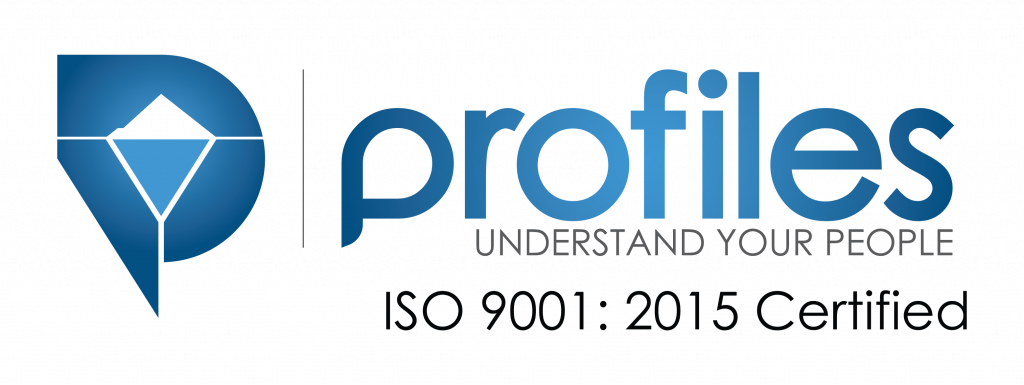A 2021 survey from XpertHR found that traditional performance reviews are still popular among organizations, with 63% stating they conduct formal appraisals annually.
However, the shift from this “old-fashioned” method of employee evaluation has been taking place for years: Over one-third of U.S. companies have abandoned conventional review processes since 2016.
I’ll explain the key reasons for doing so, as well as various ways of improving your approach so you can make the most of your evaluation process.
Contents
- The drawbacks of traditional performance reviews
- How to optimize performance reviews and drive more value
- How to structure performance reviews
- How to conduct performance reviews
- How to run performance reviews remotely
The drawbacks of traditional performance reviews
The long-established practice of holding annual performance appraisals has multiple downsides.
It offers little value
A Gartner study discovered that, in 82% of organizations, performance reviews failed to contribute to goals. Even modern approaches, which involve collecting data and delivering a single performance review at the end of the year, do little but show that a manager can lead people better than others.
It fails to acknowledge employee achievements
Outside of a few competition-based niche sales industries, yearly evaluation and scoring only serve to make the small percentage of top performers feel good and possibly demoralize everyone else. Given that 20% of your employees are responsible for 80% of your output, this can significantly affect productivity.
This doesn’t mean the others aren’t working or achieving goals though. It simply indicates that only a select few are highly motivated and able to complete large amounts of work in short periods of time (in essence, they’re your “star” employees). But in reality, most people aren’t capable of functioning at that level.
It hinders employee engagement
Employee engagement impacts performance and plays a vital role in your company’s success. Traditional performance reviews can disrupt that due to:
- A lack of recognition for positive work, which causes 44% of employees leave
- Old performance management approaches motivate just a small portion of your workforce as well. According to a Gallup poll, only 14% of employees say performance reviews incentivize or help them improve.
In contrast, Zippia discovered that “43% of highly engaged employees receive feedback at least once a week.”
It’s time-consuming
Imagine how long it takes to evaluate every individual on your team, as well as the time these employees spend on self evaluations. Managers say they spend an average of 210 hours every year on performance management tasks, while their employees each consume 40. The time commitment needed for traditional performance reviews weakens any justification for using them.
It’s susceptible to bias
An article by the Harvard Business Review points out that, “Most performance evaluations follow a predictable pattern,” that’s often problematic.
For instance, traditional practices involve managers answering general questions about their employees, then providing an analysis from their point of view. Since these examinations can be vague in context, they may not accurately reflect an individual’s actual contributions.
Additionally, if a manager likes or dislikes a specific subordinate, this can affect the worker’s performance review and compromise the reliability of your process.
Employees aren’t involved
Conventional performance reviews typically follow top-down procedures, with managers having full control over decision-making. This provides zero opportunities for employees to offer any insight regarding their performance and can make them feel like their input isn’t valued.
Not to mention, they may be blindsided by negative evaluations that don’t give them a chance to pinpoint where they can improve. Those who’ve experienced that sidelining exhibited a 23% decrease in engagement.
Absence of regular timelines
Conventional methods typically adhere to an annual or semi-annual schedule. With feedback only being available at the end of extremely lengthy intervals, problems and appropriate solutions aren’t remedied early.
This practice also fails to record an individual’s real-time performance accurately and misses development needs as they arise.
Imagine an employee is performing well, then encounters issues three months away from their evaluation. Typically, annual evaluations will highlight that dip in performance while overshadowing the worker’s exemplary accomplishments. This may lead to problems along the line, as employees can become demotivated after unbalanced evaluations.
How to optimize performance reviews and drive more value

Due to the above disadvantages, 87% of HR leaders have considered changing their performance management and abandoning old approaches. This shift in focus is enabling appraisals to contribute to positive organizational changes.
The big question, however, is what those alterations should look like. Below are some considerations for you to incorporate into your evaluation processes.
Link them to competency and skills frameworks
Most organizations have already or are in the process of implementing skills and competency frameworks, but many still fail to connect them to performance management. This is a wasted opportunity, since integration lets you create a closed feedback loop for the existing framework and the employee.
How does it help optimize your workforce, though?
Tracking performance against skills and competencies (provided they’re correctly registered) allows HR to track productivity, contributions, and achievement against what contributes to them. At the end, it either does or doesn’t validate the framework.
At the same time, aligning performance management with skills and competency frameworks lets HR identify what capabilities are conducive to success, which ones are missing in underperformers, and the like.
This can also improve hiring and employee development since it hones in on skill gaps and what you can do to close them.
Connect performance and individual contributions to company goals
Accurate performance tracking requires they be linked to relevant goals. It also necessitates employees be aware of your objectives, how short-term goals drive longer-term ones, and be able to work towards them autonomously.
So, if hierarchy allows, integrate how employees contribute to company goals as individuals and as part of a team into your performance reviews to uncover additional value. This approach doesn’t tell you how many tasks an individual accomplished or how often. Instead, it conveys what they actually do to move the company forward.
This ties into setting realistic goals that help your organization advance as well. Performance reviews should make you aware of what’s achievable and who can attain it.
Recognize and improve rather than highlighting failure
As previously mentioned, traditional yearly evaluations can hinder employee engagement. To combat that negativity, remove public ranking equations and integrate measures that level the playing field for employees. Put the spotlight on constructive criticism, proper recognition of efforts, and positive reinforcement.
This removes interpersonal competition and prevents employees from working outside their team’s best interests. You also eliminate demoralizing performance review messaging.
When someone does have a poor performance, don’t tear them down — build them up instead. Approach the situation empathetically: Figure out where they fell short, then assess other factors like motivation, team dynamics, and their personal environment. Link negative feedback to improvement opportunities so you encourage employees to actively make changes.
You can still track high performers, but if those in the middle 60% still do their jobs well, there’s no reason to shame them because someone else did 400% more work. This will always happen, no matter how good the median employee is.
Incorporate learning, personal development, and coaching
Work evaluations should follow with improvement opportunities. Workers see value If performance revolves around learning and development, with 89% of employees in North America stating they want their company to support it.
To identify areas that would benefit from training, implement competency and skills frameworks, analyze your employee’s work, recognize shifts in technology, and assess their home and team environments, motivation, and commute.
Some common traits linked to poor worker performance can also be addressed through training or other appropriate actions that help employees excel, like:
- Clock watching: The last to arrive and first to leave are typically interested in just doing their jobs and going home. Upskilling them though can improve motivation and engagement, making up for the hours lost from this behavior.
- Resistance to change: Organizational changes involving new software or added responsibilities can cause stress and reduce performance. Helping employees adjust via coaching and learning can counter this and show them they’re valued.
- Constant complaining: This can demoralize and hurt the rest of the team. Proper guidance can help though. For example, you can reduce dissatisfaction through protocols that allow grievances to be brought up in meetings, then discussed in a one-on-one resolution scenario.
- Poor collaboration: Team imbalances and leadership styles can cause clashes. Identify where they occur, then adjust teams, schedules, or some other aspect to remedy the problem. You can address conflicts, meanwhile, through education on interpersonal management, communication, emotional intelligence, etc.
- Other issues: If an employee lacks motivation, find out what makes them tick and use that as a goal post. Personal problems, meanwhile, require empathy. Offer flexible work schedules and stress and relationship management courses to relieve these emotional burdens.
Every aspect of a person’s life can affect their work performance, so you need to pinpoint which are hindering your employees and resolve them. From there, work with them to improve their output and offer real growth opportunities.
This incentivizes an employee’s efforts intrinsically, but remember as well to reward their enrichment with something they want, like a monetary bonus.
Enable two-way communication
Conventional top-down performance reviews where employees typically have no say fail to take into account the other elements that affect their performance, like your organization as a whole.
That’s a key reason why many workers push back against traditional appraisals. If they aren’t properly equipped with the tools to succeed, grading them as if they do is unfair.
Open communication lets employees freely share what they do, what affects their productivity, and what they need to flourish. That’s critical to learn if, for instance, long-term hires or entire teams suddenly underperform due to a leadership change.
An open dialogue greatly contributes to identifying issues, solving them, and making improvements. It also helps workers find professional development opportunities, set goals, and, ultimately, thrive in their work environments.
Make performance reviews ongoing
One of the biggest flaws in conventional performance management is the lack of live feedback. Managers are reduced to delivering threats like, “That will go in your performance review,” to inform workers of their progress.
However, management best practices, ranging from the much-read “One Minute Manager” by Dr. Kenneth Blanchard to emotional intelligence, recommend avoiding this tactic. On the contrary, new techniques ask managers to provide feedback in real time, and even 96% of employees say that regular feedback is helpful. For the popular “One Minute Manager,” that looks like:
- Clarifying and agreeing on goals
- Confirming what happened or describing the mistake
- Mentioning why this behavior or situation is concerning
- Emphasizing that the person can do better and helping them find solutions (but not making the resolutions for them)
- Praising them for good behaviors
Through this approach, employees know right away when they make mistakes. It also creates opportunities early on to make corrections. Being more hands-on, this method involves managers playing a direct role in employee performance, development, and behavior.
Let’s say someone spends 60% of their time in meetings but they don’t accomplish any goals. A quick conversation with the manager can uncover why it’s happening and prompt the worker to think of a solution.
Perhaps the problem is they delegate work to others to prevent bottlenecks, but that shifts performance issues to someone else. Resolving that obstacle frees the individual in question, lets them do their job well, and prevents a negative rating or potentially a lost employee.
Integrate 360-degree feedback
360-degree feedback entails HR collecting assessments from managers, employees, and subordinates to paint a clearer picture of an individual, their overall performance, and team contributions. As a bonus, this method avoids potential issues due to metric tracking inefficiencies.
This feedback style isn’t without its flaws though. It can be subject to bias since people tend to be lenient towards their fellow coworkers. So, you have to consider relationships among colleagues when gauging performance review accuracy, but you can overcome this by combining 360-degree data with traditional data.
How to structure performance reviews
With the above considerations in mind, you can develop streamlined performance appraisals for your organization by implementing the below tips.
Identify clear objectives
You should always have an explicit goal when reviewing employee performance, whether it be identifying skill gaps, underlying team issues, learning opportunities, or those deserving a promotion.
A word of advice though: Don’t directly link your evaluations to worker compensation, as that may lead to undesirable outcomes like:
- Compromising quality to meet targets
- More instances of bias
- Forcing employees to rely on extrinsic motivators
Establishing clear objectives also helps align your review process with your organization’s goals and ensures you and your employees understand the associated expectations.
Set criteria
Your performance review’s benchmarks will mostly track how well a worker performs the following tasks:
- General responsibilities: Think of these as an employee’s basic workplace duties, including attendance, showing up on time, and how well they function on their team and follow your organization’s policies. Although they’re generalized for all positions, they affect each worker’s chances of succeeding in your company.
- Job-specific responsibilities: These, meanwhile, focus on a worker’s daily obligations and tasks tied to their position.
Assign skills and competencies
Once you’ve outlined the responsibilities that will serve as meter sticks for your performance reviews, identify the capabilities necessary to carry out these duties well.
For instance, soft skills like communication, time management, listening, and problem-solving are a must to perform one’s general responsibilities effectively. Personality traits like agreeableness and conscientiousness are a great help as well.
Job-specific responsibilities, on the other hand, require more hard skills. For instance:
- If you handle inventory management, are you proficient in using your company’s software and maintaining adequate levels of stock?
- As a digital marketer, are you able to post engaging content regularly on your employer’s social channels or optimize their website for SEO?
Once you’ve linked your criteria and your employees’ competencies for evaluation, gather supporting examples to aid your process. These help clarify expected behaviors and provide a concrete basis for feedback. Incorporate examples like an individual’s attendance record, a history of client complaints, website performance metrics, etc.
Establish communication channels
You’ll need to conduct your appraisals and deliver feedback through an appropriate channel. Consider options like email, a video conferencing platform, a messaging tool, or a face-to-face meeting.
Context also plays a role here, such as whether you work with people on-site or virtually. Whatever your circumstances, the chosen lines of communication should remain consistent across your organization.
Follow timelines
Your performance management efforts should follow a systematic pace, so determine how often to conduct them. For example, you could provide daily real-time feedback, then take concrete measurements on a weekly to monthly basis.
Offering continuous feedback and providing corrections or criticisms only when necessary is another effective option. However, chiming in daily may make workers think you’re micromanaging them, so be careful not to go overboard.
Then, at the end of short periods like a month, you can quantify performance and identify where it’s lacking. Experiment with different cadences to find a schedule that works best for you and your employees.
Additionally, converse with each employee privately to learn what’s affecting their productivity and then develop solutions and goals to address them. Be sure to follow up some time after the discussion to ensure the identified problems have been resolved.
Build learning and development systems
Learning and development opportunities are excellent ways to keep your employees engaged and make them feel valued. Establish a procedure for delivering training to improve your performance management process as well.
For instance, after a regular evaluation, you may find your marketing manager and their team underperformed due to new SEO tools that have a steep learning curve. Obviously, they need training to close that gap, but what systems do you have in place to provide it?
Your company should be prepared for such situations. That means HR must be ready to accommodate and work with affected teams, including making educational materials accessible.
Create a recognition and rewards program
Streamlined evaluations are meant to uncover skill gaps and underlying issues that affect worker performance, resolve them, and, if needed, set goals for an individual’s learning and development, like hitting a certain metric after finishing a sales course.
A program that incentivizes clearing established objectives will motivate employees to pursue personal improvements, as well as address the lack of acknowledgement that stems from traditional performance management.
Employees back up these claims, with 92% feeling appreciated in organizations with recognition programs, compared to only 70% in those without one.
How to conduct performance reviews
Once your evaluation process is set up, implementation is next. Here are some best practices that’ll help you carry out a seamless review.
Prepare early
Since 360-degree feedback requires input from managers, employees, and subordinates, encourage all parties to have their assessments ready before the review.
Provide forms or questionnaires so employees can gather their thoughts on their accomplishments, difficulties, areas of improvement, teammates, and environment. It’s also important to set clear expectations for upcoming discussions.
Be meticulous
Before calling an individual into a meeting, thoroughly sift through their work, achievements, and feedback from superiors, subordinates, and teammates. Familiarize yourself with the employee’s goals and the challenges they’ve dealt with and prepare supporting examples and observations for the discussion. This ensures the appraisal is grounded in specific instances of documented behaviors.
Start on a high note
How the conversation begins will set the tone for the rest of your meeting, so don’t point out anything negative from the get-go. Instead, create a light atmosphere and encourage your employee to engage by first acknowledging their accomplishments and strengths. Highlight successful tasks and projects as well.
Be mindful of your tone and language; you should be supportive and encouraging, not negative and accusatory. Most of all, be assertive but empathetic.
Address areas for improvement
Once you cover the favorable aspects of the review, you can bring up performance issues that need to be tackled. Make sure you approach these problem areas with a constructive mindset. Rather than criticizing, offer suggestions that contribute to improvement. Discuss how your employee can overcome hurdles they encounter at work and help them grow in their role.
Be specific and objective
Throughout your meeting, provide detailed feedback based on observed behaviors. Focus on what can be trained and corrected and use concrete examples to illustrate your points.
For example, “I noticed you’ve come in late on Tuesdays and Thursdays for the month of November. Is there a specific reason for this? What can I do to help?”
Before offering suggestions, listen to the employee’s side of the story. They may bring up an unfavorable commute or say they’re responsible for bringing their kids to school on certain days of the week.
This approach helps the employee understand the situation and what needs correction. You want reviews to be fair and objective as well, so don’t base your evaluation on the individual’s personal traits.
Set goals
The next step is to collaborate with your employee to establish SMART (Specific, Measurable, Achievable, Relevant, and Time-Bound) goals.
Using the example in the previous point, the solution could be as simple as offering virtual work days. But for drops in performance, like a digital marketer who’s unable to hit a target number of social posts weekly, you may need to adjust your benchmarks instead.
This conversation helps you and your worker come to a mutual understanding about productivity expectations and work towards desired outcomes. It also ensures clarity and accountability between the two parties by placing responsibility on both for making positive changes.
Pinpoint development opportunities
With goals and areas for improvement established, talk about learning opportunities that are in line with those objectives.
Let’s say the digital marketer from the previous point had difficulty generating content because they lack copywriting training. Skill-related courses, workshops, or coaching would greatly aid their improvement.
At this point, inquiring about your employee’s long-term career aspirations is useful as well to align your development plans with their objectives. Just make sure the skills they refine contribute to both their development and your organization’s needs.
Recognize and reward employee efforts
To boost morale and further nurture positive behaviors, show appreciation by acknowledging your employee’s efforts and contributions. Reward them for stepping up and achieving the goals set during their evaluation as well.
Besides typical milestone recognition via company-wide communications, offer workers rewards like bonuses or the opportunity to work on a major project they’re eyeing.
Follow up
At the conclusion of the performance review, summarize your discussion in easy-to-digest points, then reiterate the areas in need of improvement, new goals, and the development plans that you and the employee agreed upon. Outline their next steps and offer guidance as well.
Most importantly, follow up consistently to monitor your worker’s progress. If they encounter difficulties during their developmental journey, have another meeting, provide additional feedback, and make adjustments.
How to run performance reviews remotely
Today’s professional environment has seen a rise in hybrid and fully remote work setups. That makes it crucial to be able to conduct evaluations virtually as well as in person. The process will be mostly the same as face-to-face appraisals, but I’ve listed some tips specifically for virtual reviews.
Choose the right tools
You can easily deliver and collect forms, questionnaires, and messages via email or a communication platform like Slack.
For calls and remote reviews, you’ll need reliable video conferencing software that includes features like screen sharing and document collaboration. I suggest platforms like:
Involve your personnel in the decision to learn what platform they’re comfortable with before deciding which to adopt (they should be able to use it with minimal effort). Then, establish the chosen tool as the primary communication channel for performance evaluations.
Schedule thoughtfully
For those with an international remote team, time zone differences are an inevitable obstacle. When scheduling a virtual performance review under this circumstance, take care to find a time that accommodates both parties and enables a focused, uninterrupted discussion.
To avoid technical hiccups and loss of time, provide clear instructions for joining the meeting. An appointment scheduling tool like Calendly can greatly help as well.
Prepare and share documents ahead of time
Like in-person performance evaluations, preparation is crucial, meaning all relevant documents — forms, questionnaires, and metrics — should be readied in advance. This gives both you and your employee ample time to gather thoughts and draw up questions, leading to a productive, meaningful conversation.
Conduct reviews in private, distraction-free settings
Encourage remote employees to choose quiet, well-lit spaces for their virtual performance review. This minimizes distractions and promotes a focused, professional meeting. You can blur your backgrounds or use virtual ones for further privacy as well.
Use video
Simulating a face-to-face interaction allows you to make a more personal connection, so enable your cameras. This also helps participants pick up on non-verbal cues, smooths communication, and results in a more engaging experience.
Utilize visual aids
Visual context promotes clarity and helps employees understand specific points. Show performance charts, project timelines, and work samples to support your review findings and guide your discussion.
For optimal effect, leverage screen-sharing capabilities. This enables you and your employee to stay on the same page throughout the evaluation.
Follow up in writing
At the end of each performance review, send a follow-up email that summarizes the key discussion points, the action plan you and your employee agreed upon, and any goals you set. This drives home the conversation and verifies that both parties have properly aligned expectations moving forward.
If you pointed out any learning and development opportunities for the individual’s improvement, regularly follow up and monitor their progress through a messaging tool or via email. You can address any hurdles they encounter there and, if necessary, schedule a call about any necessary changes.
Wrapping up — Optimizing performance reviews is pivotal for success
Although companies are increasingly abandoning conventional performance management practices due to their drawbacks, optimizing and updating them can help your organization make the most of these evaluations.
Treat employee reviews as an opportunity to cultivate talent, rather than as a contractual obligation. If you build them around developing and recognizing your employees instead of their shortcomings, you’ll gain more valuable results and see stronger improvements in the long term.
Implement the tips outlined earlier to help your employees (and your business) flourish.




